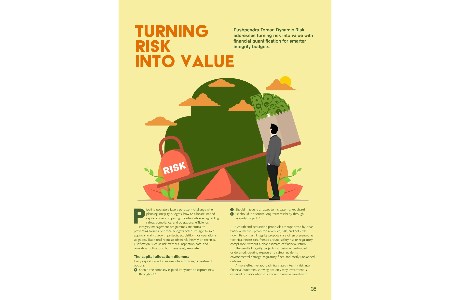Turning Risk Into Value
Published by Emilie Grant,
Assistant Editor
World Pipelines,
Dynamic Risk addresses turning risk into value with financial quantification for smarter integrity budgets.

Pipeline operators face a persistent challenge when planning integrity budgets: how to allocate limited capital across competing priorities while safeguarding safety, compliance, and operational efficiency.
Integrity management programmes are critical to preventing failures, yet their budgets often struggle to gain approval against growth projects, acquisitions, or operational upgrades. Traditional requests often rely heavily on technical justification, such as risk matrices, inspection data, and regulatory obligations, but these rarely resonate.
The capital allocation dilemma
Every capital cycle forces executives to weigh investment options:
- Should the company expand its system to capture new throughput?
- Should it acquire an asset to increase market share?
- Or should it prioritise long-term reliability through integrity projects?
Growth and acquisition proposals are supported by clear financial metrics, projected revenues, IRRs, and net cash flows. By contrast, integrity proposals are often presented as technical necessities, framed around safety risk or regulatory compliance, without a clear estimate of financial return.
The result? Integrity projects risk being underfunded or deferred, creating exposure to safety incidents, environmental damage, regulatory fines, and costly unplanned outages.
A more effective approach translates integrity risk into financial outcomes, showing not only why investment is essential but also when it is a sound financial investment.
Defining risk in economic terms
At its core, risk is the combination of two elements:
- Likelihood of Failure (LoF): the probability that a threat – such as corrosion, cracking, or geohazards results in a failure event within a given timeframe.
- Consequence of Failure (CoF): the impact of that event in terms of safety, environment, reputation, and financial loss.
Quantitative risk assessment (QRA) and probabilistic risk assessment (PRA) methodologies provide robust ways to calculate LoF and CoF. But while technically rigorous, their outputs (risk matrices, probability distributions) are not easily translated into the language of finance. This is where the capital optimisation methodology comes into play.
The capital optimisation methodology
The capital optimisation methodology converts risk results into standard financial metrics, enabling integrity budgets to be compared on equal footing with other corporate investments. It is built on four key elements:
- Investment: the cost of prevention, such as inspection, repair, or mitigation.
- Expected cash inflows/avoided outflows: revenue earned or the avoided costs of a failure, such as lost product, emergency response, fines, and reputational damage.
- Timeframe: the expected degradation curve, identifying when a failure is likely to occur.
- Discount rate: reflects the company’s cost of capital or the expected rate of return.
The net present value (NPV) of any integrity investment is calculated from these key elements. Where:
- Positive NPV: investment in prevention is financially viable, as the avoided future costs exceed the current investment.
- Negative NPV: investment in prevention is not yet economically justified, though future reassessment may change the outcome.
This framework converts integrity spending requests into familiar financial metrics, supporting objective, transparent, and data-driven budgeting.
To access the full version of this article and get a free trial subscription to World Pipelines, sign up here!
Read the article online at: https://www.worldpipelines.com/equipment-and-safety/16102025/turning-risk-into-value/
You might also like
The World Pipelines Podcast - "Fight while wounded": how pipelines can stay resilient amid cyber threats
A conversation about how the energy and pipeline sectors can build cyber resilience in an era of growing complexity and connection. Featuring Ross Brewer, Vice President and Managing Director of EMEA at Graylog.
Tune in to the World Pipelines Podcast on your favourite podcast app today.

